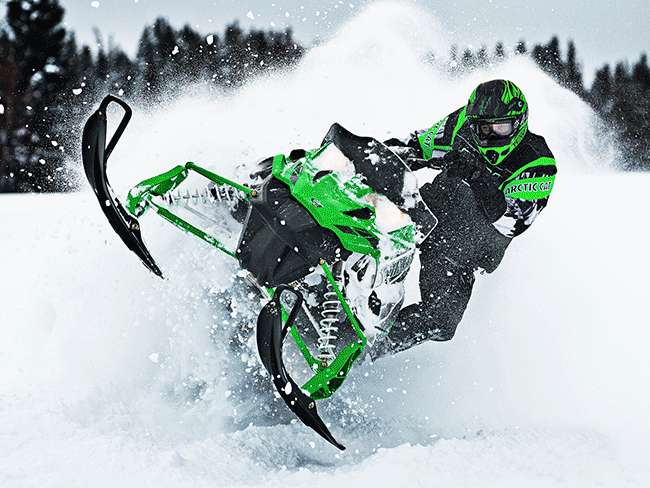A Brief History of the Snowmobile
Posted by Goggles n More on 21st Dec 2014
Shop Ski Goggles

The challenges brought on by the need to transport people and their belongings cross-country during the winter season led engineers to build the winter utility vehicle known as the snowmobile. The 20 th century saw an influx of various designs. Wisconsinites were experimenting well before the 1900s with bicycles they outfitted with rails, paddle systems, and steam-powered sleighs. Early snowmobiles holding two passengers, were powered by gasoline engines and ran on a track system with a sled-like design. However, the origin of the snowmobile cannot be credited to any one inventor, but rather a collaborative progression alongside the combustion engine and snow-traversing chassis.
The earliest design patent went to Ray H. Muscott of Waters, Michigan, in 1915. The following year, Muscott took his Canadian patent for a snow vehicle utilizing a front-ski and rear-track system, and was issued his American patent on the 27 th of June. Later models took the Ford Model T and modified the undercarriage with the newly recognized ski and track system. Such “Model T Snowmobiles” or “Snowflyers,” as they were called, became exceptionally popular in the northern regions of Canada and were utilized for rural mail delivery during the winter season.
Carl Eliason was credited with the first snowmobile prototype during the 1920s when he took a two-cylinder motorcycle engine and mounted it to a long sled. By 1927, Eliason got his patent and manufactured 40 of his snowmobiles. Eliason then sold his patent to FWD Company in Clintonville, Wisconsin, upon receiving an order out of Finland for 200. FWD Company went on to produce 300 more snowmobiles for military use before transferring the patent to a Canadian subsidiary.
But it wouldn’t be until 1954 when David Johnson, Paul Knochenmus, and Orlen Johnsen partnered up to design the first snowmobile concept that we are familiar with today. Originally designed for hunting in the winter, the trio’s design was turned down by their company’s CEO, Edgar Hatteen, who was skeptical of its profitability and declined their proposal for mass production. Johnson, Knochenmus and O. Johnson later sold their snowmobile to a lumberyard for $465. Then, in 1956, two years after being denied by Hatteen, The trio brought their second snowmobile concept to him and the consumer market. The new snowmobile design was called the Polaris Sno Traveler .
Today’s recreational snowmobile design mimics the Polaris Sno Traveler’s concept. As of 2003, the snowmobile market has remained constant with the four giants of the industry: Arctic Cat, Yamaha, Polaris, and Bombardier Recreational Products (BRP). When Bombardier came out with a smaller and lighter engine to fit the 2003 “REV” framework platform, they designed the modern snowmobile with its one-to-two person open-cockpit design and started using the name Ski-Doo.
Engine performance has come a long way from the original 5 horsepower engine. Most modern snowmobiles use a two- or four-stroke engine with volume ranges between 600cc to 1200cc that provide around 150 horsepower and newer turbo-charged modules spitting upwards of 200 ponies. Today we have two types of snowmobiles, trail and sno-cross models. Trail snowmobiles are usually heavier and more powerful, whereas sno-cross snowmobiles have smaller engines and lighter components for high flying maneuvers and quick-track acceleration.





